How does living matter relate to machines?
The first part of the 20th-century witnessed simultaneously the discovery of the basis of information storage in DNA and the revolutions of the modern computing era.
Since then, the fields of computer science and modern biology have co-evolved in a conceptual framework that looks at life as an information processing system and at digital computations as Intelligence.
These metaphors allowed these fields to influence each other in practice: engineering workflows have been introduced in biology and bio-mimetism led to the implementation of new kinds of algorithms.
While this relationship has been limited to a conceptual nature for long, we are now building bio-hybrid robots and complex systems interacting through hard, soft, and wet mediums.
The first part of the 20th-century witnessed simultaneously the discovery of the basis of information storage in DNA and the revolutions of the modern computing era.
Since then, the fields of computer science and modern biology have co-evolved in a conceptual framework that looks at life as an information processing system and at digital computations as Intelligence.
These metaphors allowed these fields to influence each other in practice: engineering workflows have been introduced in biology and bio-mimetism led to the implementation of new kinds of algorithms.
While this relationship has been limited to a conceptual nature for long, we are now building bio-hybrid robots and complex systems interacting through hard, soft, and wet mediums.
If these new kinds of machines find applications in various fields such as medicine, computing, architecture and design, they also deeply question our conception of the nature of life and machines.
Cryptographic Beings is a technological proposal that leverages our ability to control and abstract biology to perform digital information storage.

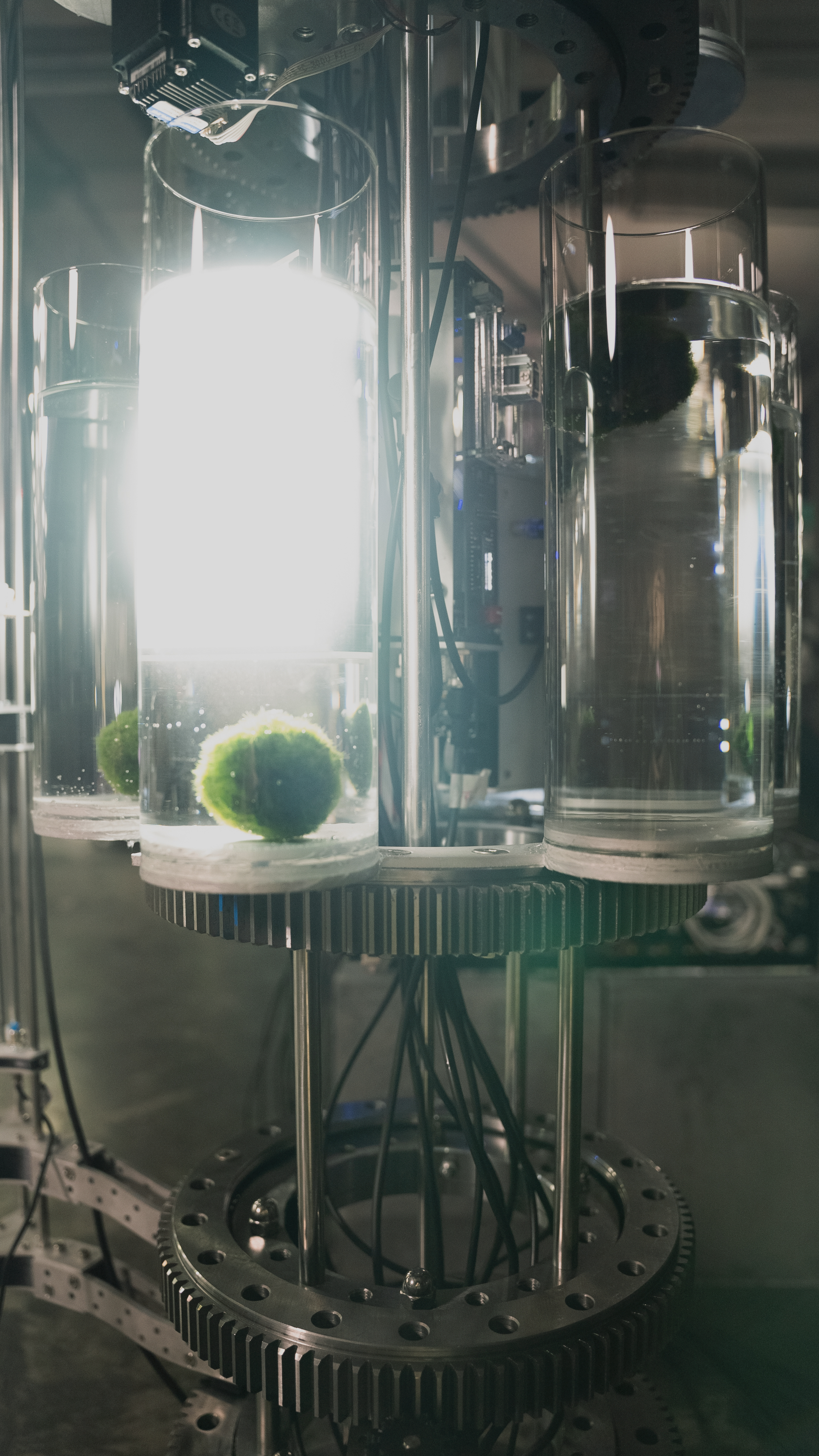
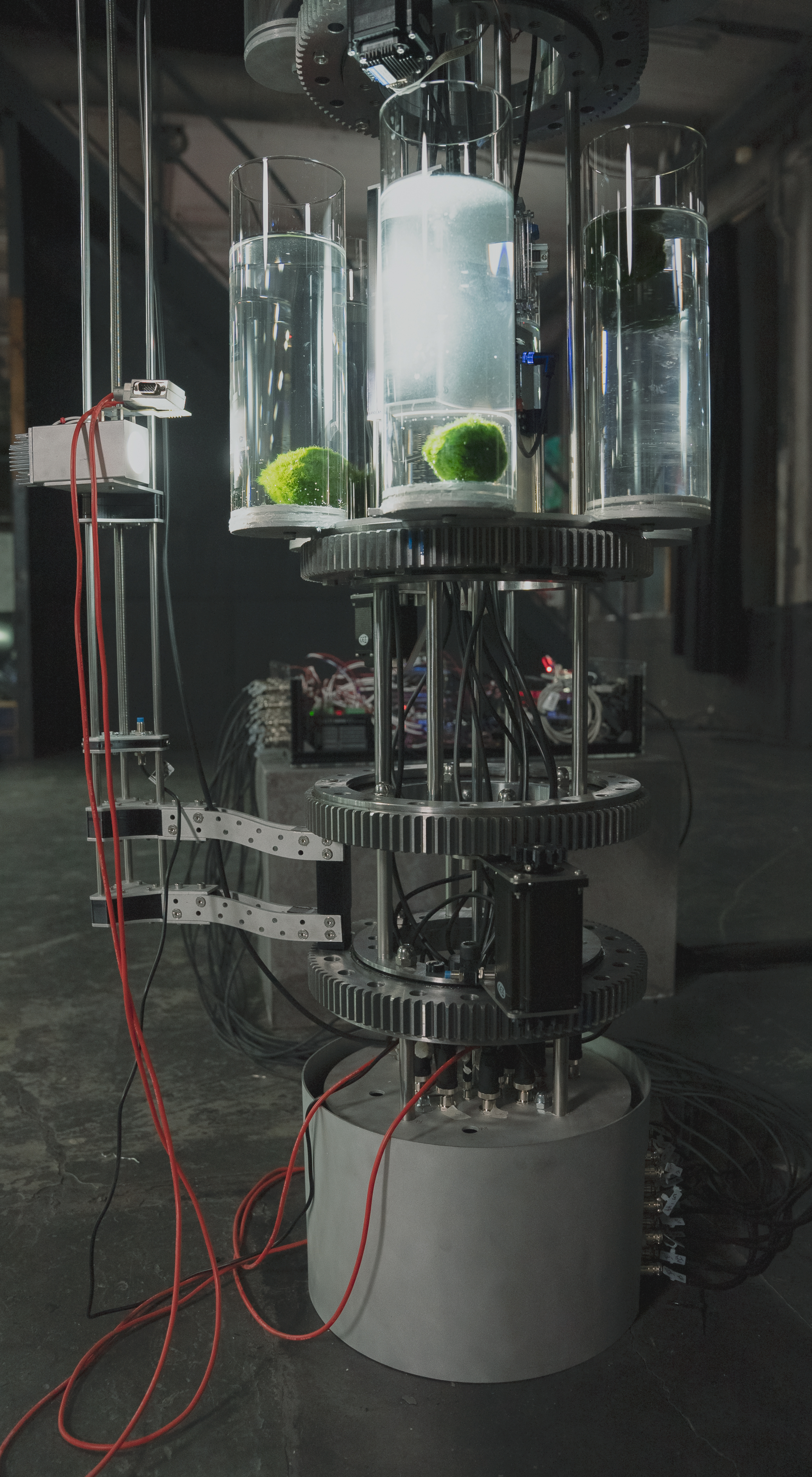
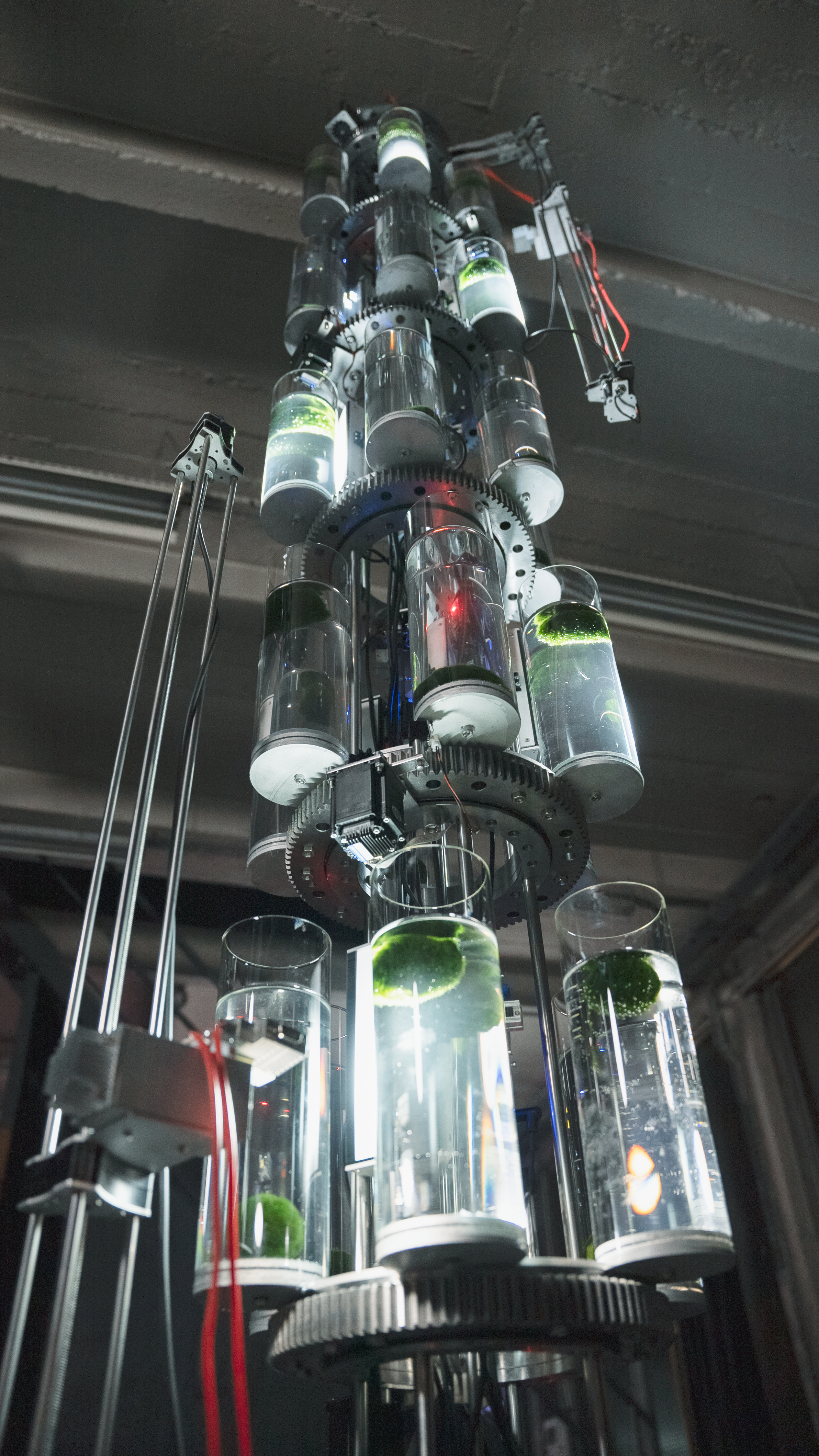

How:
Aegagropila linnaei are large spherical colonies of photosynthetic filaments.
Photosynthetic activity produces gas vesicles visible to the naked eye
This property allows them to float when exposed to light and sink in the dark
Aegagropila linnaei are large spherical colonies of photosynthetic filaments.
Photosynthetic activity produces gas vesicles visible to the naked eye
This property allows them to float when exposed to light and sink in the dark
By reducing their behaviors to binary states, they can be used to store digital data.
➔ A sinking algae represents a 0
➔ A floating algae represents a 1
Assembled in bytes, the setup is capable of storing a 5 letter word
Assembled in bytes, the setup is capable of storing a 5 letter word
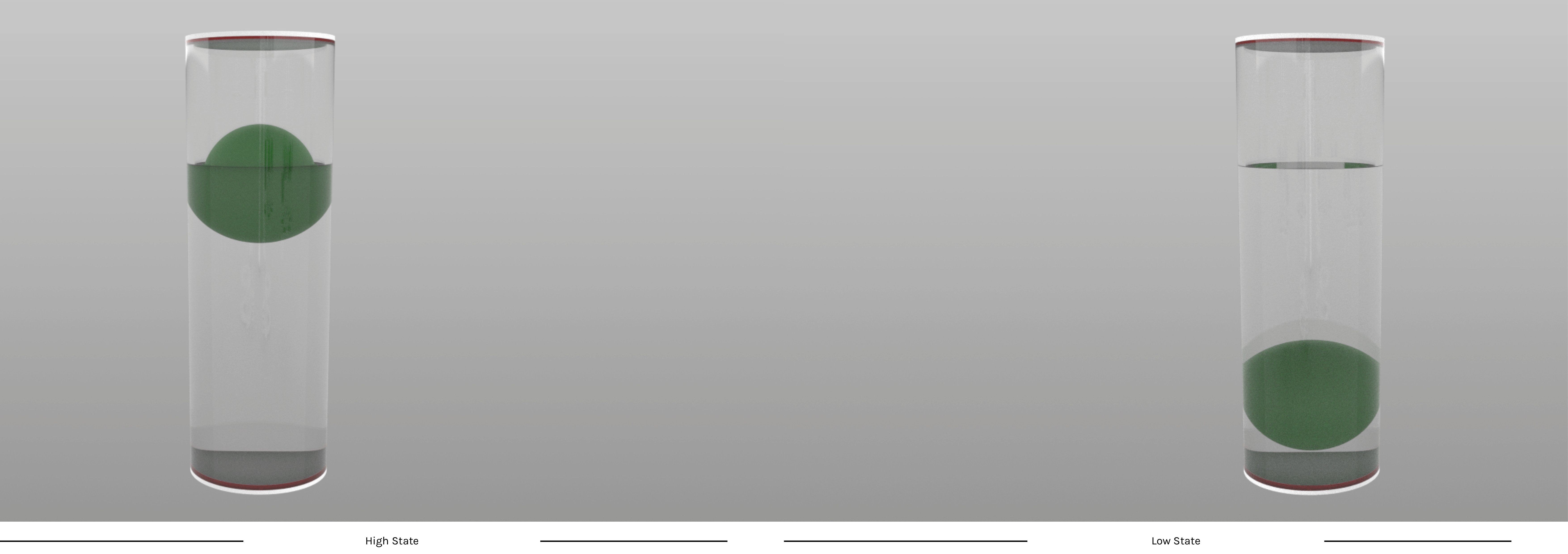


Control:
The binary states of the algae can be switched by controlling light exposure: flipping the vegetal bits
The binary states of the algae can be switched by controlling light exposure: flipping the vegetal bits
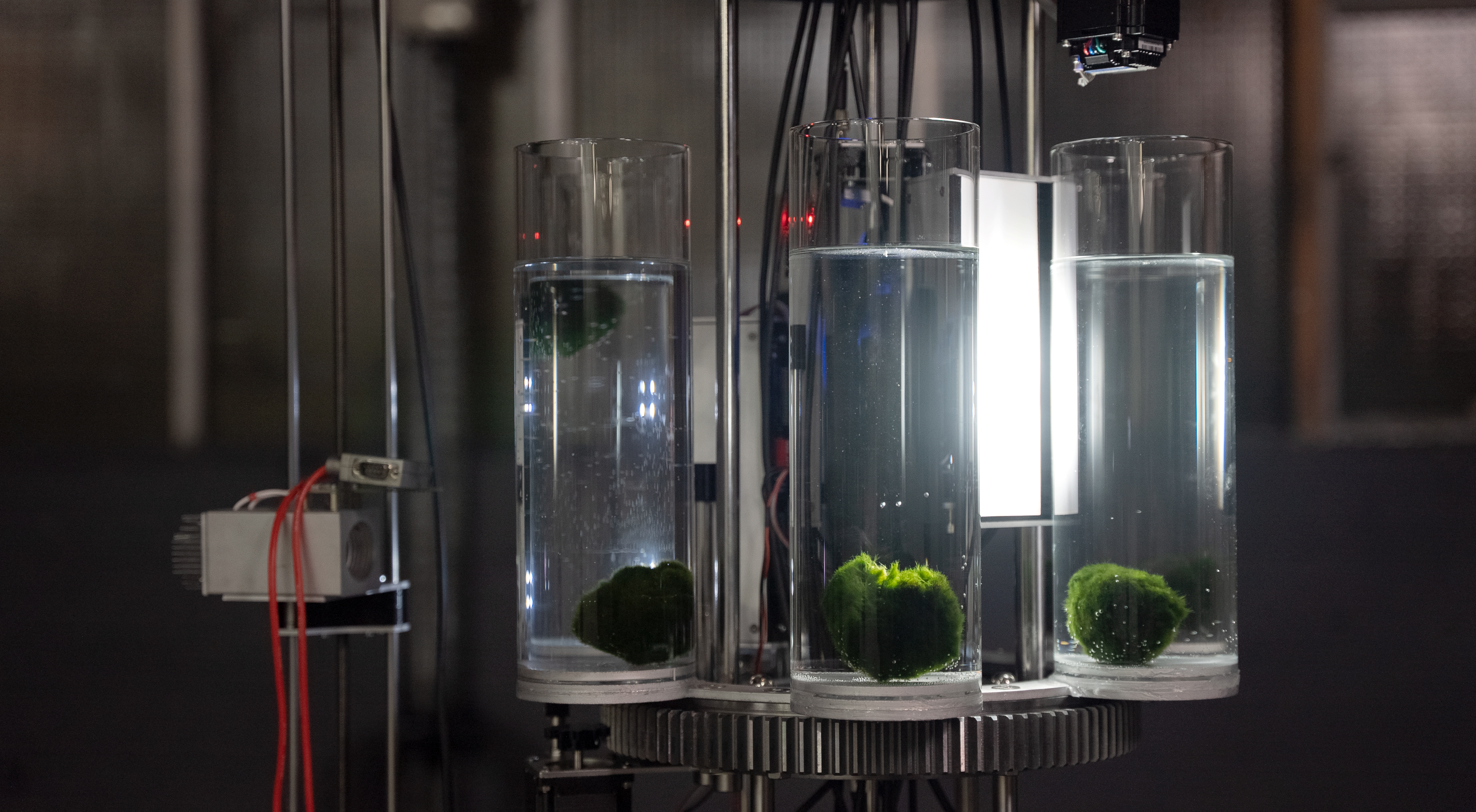
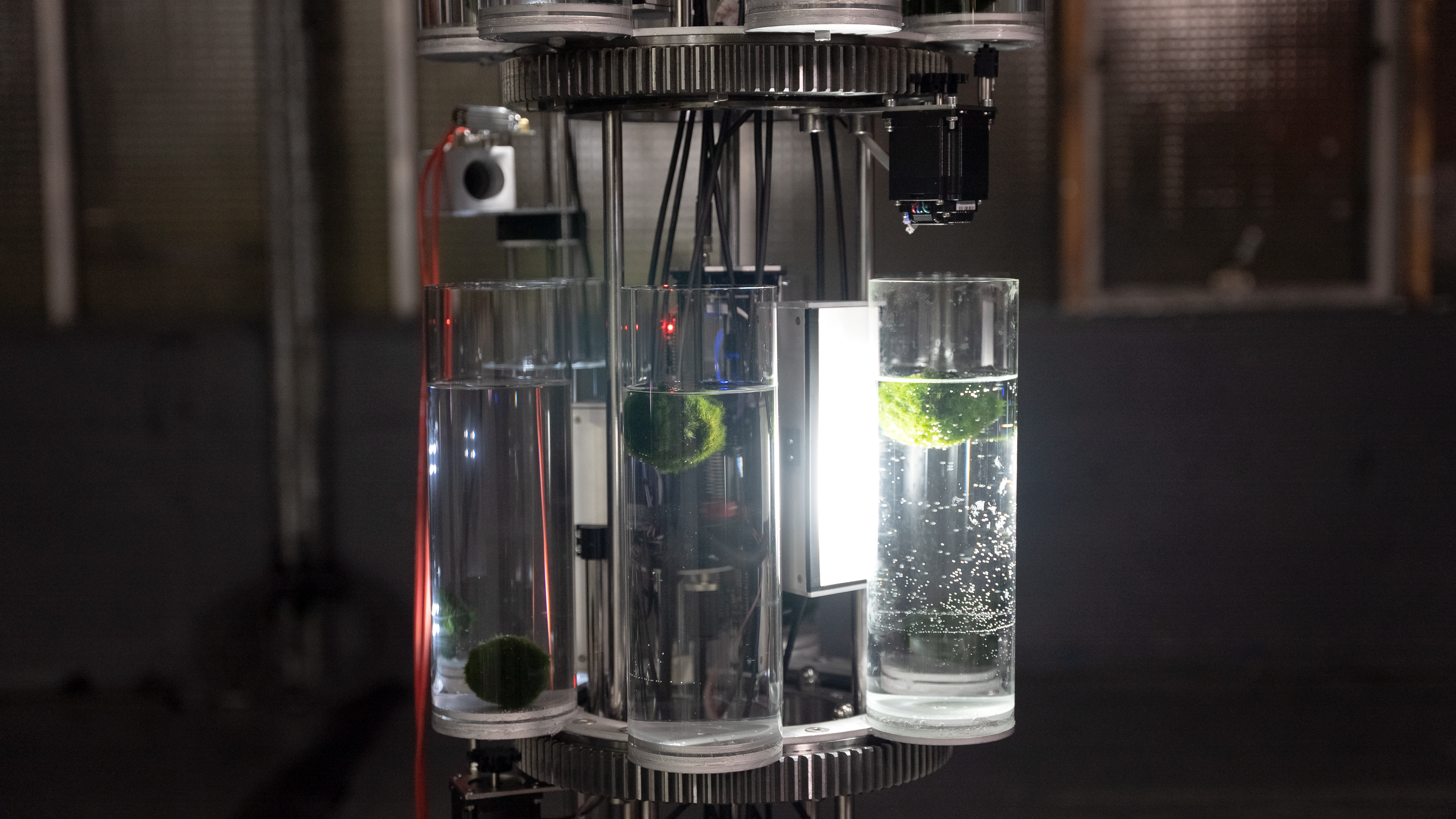
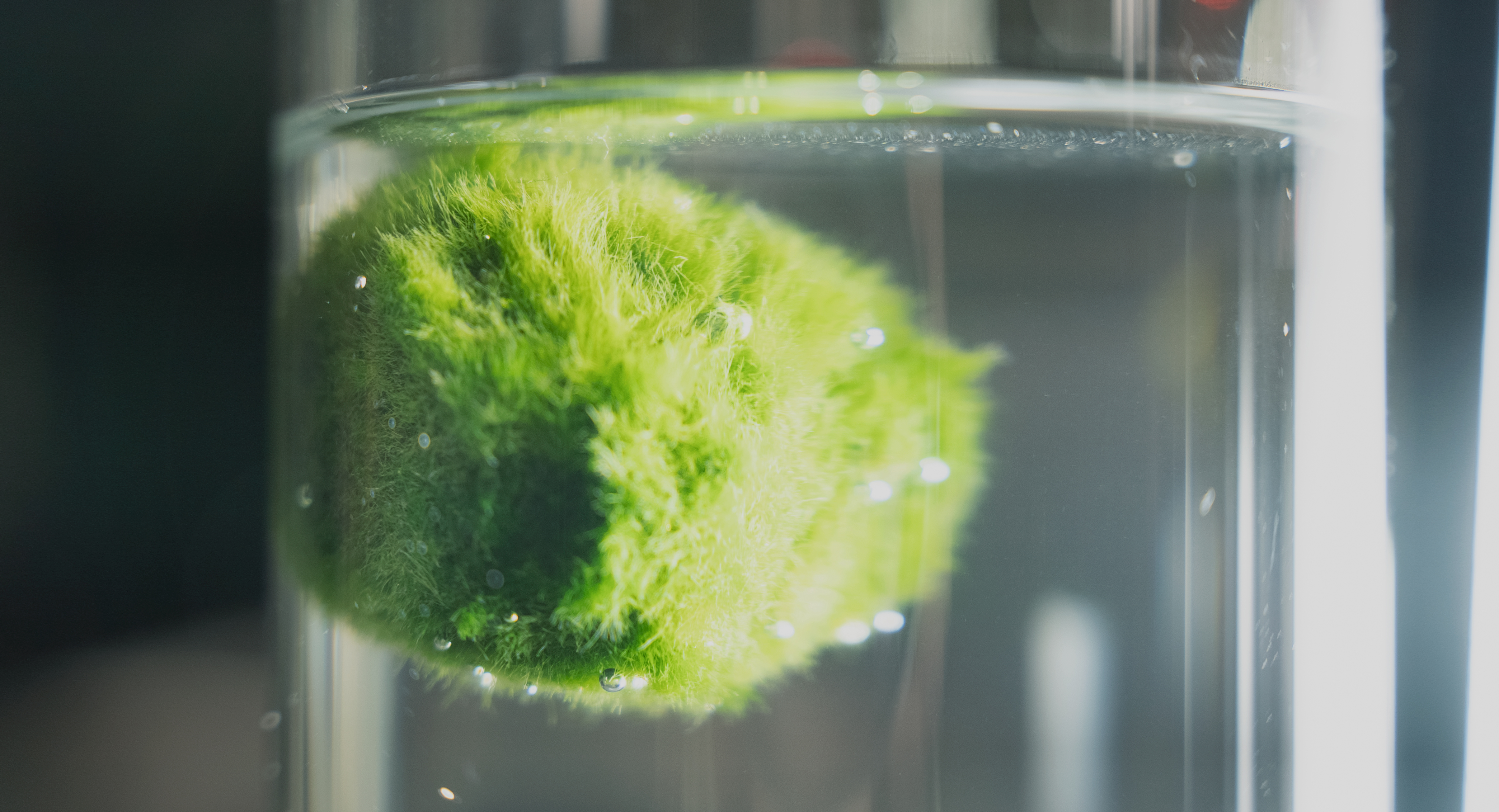

Credits & acknowledgement:
Concept and production: Michael Sedbon
On-site production & coordination: 36 degrés
Video: Maison Mimesis
On-site production & coordination: 36 degrés
Video: Maison Mimesis
This project has been produced as part of Au Delá des Pixels. A show produced and currated by 36
degrés
References
1.
Phillips, N., Draper, T.C., Mayne, R., Adamatzky, A., 2019. Marimo machines: oscillators, biosensors and actuators. J Biol Eng 13, 72. https://doi.org/10.1186/s13036-019-0200-5
2. Phillips, N., Draper, T.C., Mayne, R., Reynolds, D.M., Adamatzky, A., 2022. Marimo actuated rover systems. J Biol Eng 16, 3. https://doi.org/10.1186/s13036-021-00279-0
2. Phillips, N., Draper, T.C., Mayne, R., Reynolds, D.M., Adamatzky, A., 2022. Marimo actuated rover systems. J Biol Eng 16, 3. https://doi.org/10.1186/s13036-021-00279-0
Press
Awards and distinctions
▓▓ Lumen Prize 2022 Shortlist
▓▓ A’ Design Award